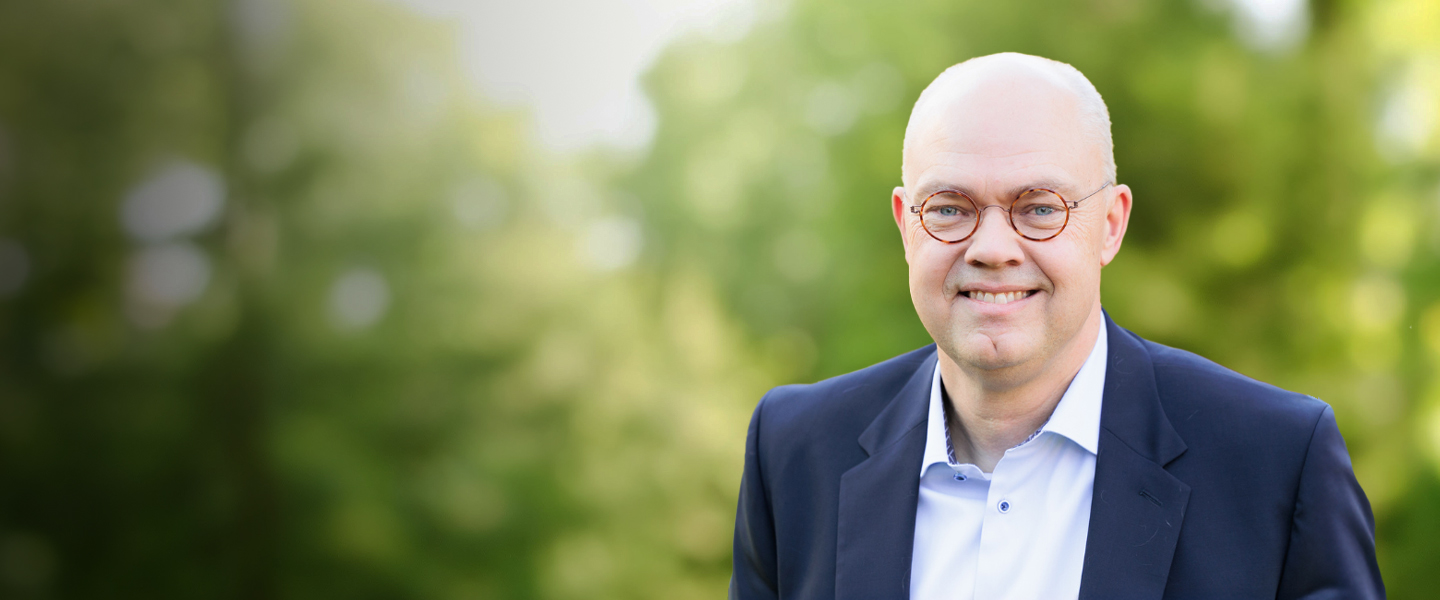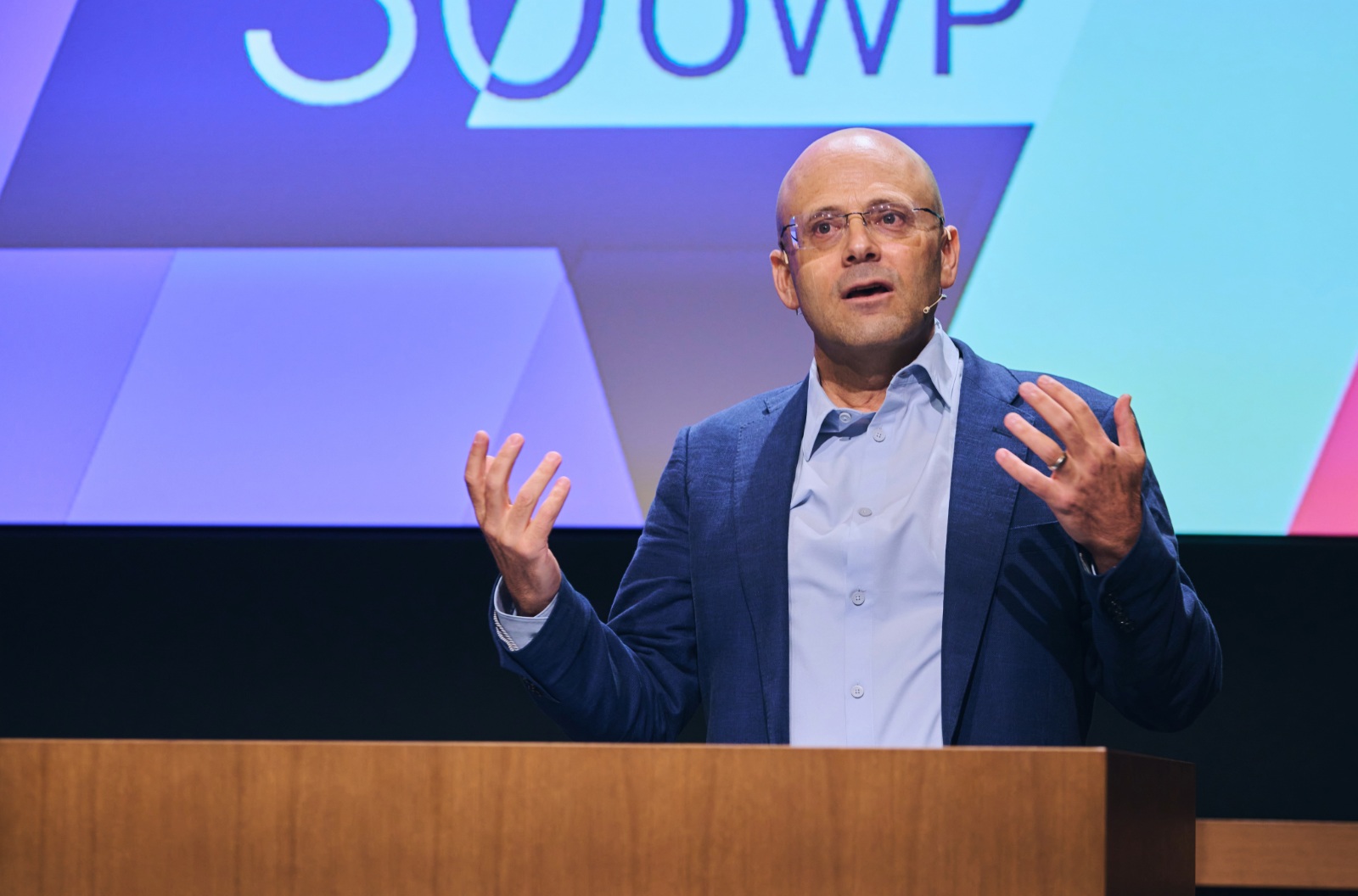Thirty learning and development (L&D) professionals met at IMD to participate in the second Co-creating Global Transformation Journeys event. The event reflected IMD’s commitment to give something back to our valued partners, from whom we have learned so much over the years. The research for this event was drawn from the book “The 3Rs of preparing your organization for the future” by Professor Thomas Malnight and Tracey Keys, from Professor Howard Yu’s article with IMD Senior Research Fellow Jean-Louis Barsoux, “The Co-Innovation Sweet Spot” and Professor Ben Bryant’s article “From Madness to Mindfulness: How business leaders can thrive by embracing complexity.”
Challenges of transformation
In today’s dynamic and complex environment, businesses need to be geared to situations of volatility and ambiguity rather than of certainty and predictability. This means understanding the major changes externally, the barriers at the organizational level, as well as developing new processes and skills to enable transformation. To successfully do this, organizations need to co-create new knowledge to carve out a transformation journey that everybody can take together.
Outside-in perspective: How has the world been changing?
In this increasingly volatile, interconnected world, natural resources are becoming more and more scarce, leading to commodity prices shooting to unprecedented levels. At the same time, staggering increases in computing power and the declining cost of data storage have opened up many new opportunities. The abundance of technology has also led to disruptive innovation, creating whole new categories such as Smart TV and wearables. These technological advances call for a different type of leadership and new practices in the organization.
Inside-out perspective: What are barriers to transformation?
Despite increasing short-term pressures, the following trends make a compelling case for business transformation. It is critical for leadership teams to actively debate the implications of each of these trends on their businesses in order to consider the future of their organizations. One of the key aspects of the transformational journey is not to predict the future, but to collectively challenge assumptions and contribute to shaping it for the better.
- Industries and competitors: Increasing commoditization means many players are competing to own the relationship with the consumer. Competition is moving beyond market share wars; it is coming from companies with different businesses, different business models, different mindsets, different value propositions, and different profit formulas. Who will your future competitors be, what will their business models and value propositions look like, and how will they transform your industry?
- Customers and consumers: we have witnessed a shift from a mass-production mindset to mass customization and now from customization to co-creation – customers want to be involved in design. At the same time, products are being increasingly commoditized and services are moving to a set of experiences. What are your customers expecting and looking for? What will they be willing to pay a premium for?
- Growth markets: Many established market players are looking to emerging markets for future growth prospects, shifting their existing business models to local markets. Emerging market players are growing and have international ambitions. Who will have the advantage? What are the critical factors for winning these opportunities, thinking beyond incremental adjustments to today’s activities
- Employees: Several generations coexist in companies today, and have very different expectations with regard to work, information, technology and loyalty. What can future employees expect and demand when selecting where they work? What would make an attractive employer? How could work roles and activities evolve in engaging and challenging future generations?
- Societal expectations: Connection to a broader purpose creates commitment and passion in employees. How could the role of purpose and business’s relationship with society evolve in the future? If business discipline and rigor are necessary, but not sufficient, for sustainable future success, what else might be required?
What kind of processes allow us to change?
Core businesses are maturing. Continuously considering the next growth engine is important. Most company processes for evaluating growth opportunities are based on the past and therefore tend to provide the wrong answer. More mature companies have declining growth prospects and their stock prices are punished by markets. In order to justify current stock price, there is always a growth gap in financial projections that organizations need to close. In addition to running experiments to see what innovation might work in the future, companies need to show a good track record with regard to new customer adoption, for example entering and succeeding in a foothold market.
Where is your company today? Where does it need to move in the next five years? What would happen if you don’t move? How can you build the capabilities that will give managers the freedom to experiment while holding them accountable?
Leadership challenges: Engaging your team
How can senior executives have high- quality conversations that lead to collaboration and collective responsibility – essential enablers for transformational journeys? What is the CEO’s role in the transformation journey, and what is the best way to ensure that he or she owns it?
A “truth & trust approach” helps top executives to share feedback with one another, which forms the basis for trust. This is different from a bonding approach (which uses emotions to create connections, but does not sustain) and a diversity approach (which appeals to rationality to create a case for acknowledging and valuing difference but fails to engage emotions.) The reality is that top leadership teams are often risky environments; truth among senior executives is rare, and giving and receiving feedback is difficult. How can they have difficult conversations in a way that builds trust rather than destroys it? At IMD, we use different exercises to build truth and trust. Feedback using metaphors helps to access the unconscious and gently introduce truth. A number of unconscious dynamics are often going on at the team level that – if left unchecked – can stymie its effectiveness. This happens to groups at different stages: newly formed teams often lack the safety required to be able to air conflict, while groups that have been together for a longer period tend to get stuck in existing patterns. Conflict is critical in a team to allow constructive exchanges to take place; the CEO’s role in the senior leadership team is to make sure that conflict moves around and doesn’t get stuck in existing patterns.
Transformation is a journey that needs to evolve and continue, and that requires alignment. IMD favors multiple interventions in short bursts, with different stages as the journey evolves. Discussions are facilitated to gain a better understanding of what work the group is doing both at the rational and irrational level. In one exercise, individuals draw a personal sociogram showing all the groups to which they belong. This can stimulate conversation around loyalty and commitment, confl of interest, and how these issues cascade through the organization. The scope of the discussion needs to be managed, but can enable diffi conversations to take place. Some team dynamics that can emerge through these discussions are:
- How do people earn and lose respect and legitimacy in the team? Whose voice sounds more certain than others? Who questions the authority of the leader and others?
- Where are the coalitions in the team, and where is the competition?
- Do people easily take different sides and debate or do they get stuck in one position?
- How fluid is conflict and tension in the whole team, and how stuck is it between individuals or coalitions?
- How open are team members with information, knowledge and emotion?
Transformation journeys: Capabilities that are critical for the future
How do we generate insight when historical data are not available? The increasing interconnection between people on digital platforms is a potentially powerful way to access the wisdom of the crowd and bring it inside the company. It is critical to cultivate a community and to develop criteria and processes that distinguish between good ideas and bad. If done well, companies can bring external ideas and expertise to bear in an extremely productive manner.
Many breakthrough ideas come from the periphery. While the mainstream discipline is good at helping to accelerate existing operations, intractable problems often benefit from thinking from a different discipline. The philosophy of open innovation is that customers are active creators of their own solutions, since they face these challenges every day.
Many FMCG companies are beginning to leverage co-creation opportunities for transformation by involving consumers in creating new products. Xiaomi, a Chinese mobile phone company, relies on an army of users to develop its software free of charge. This enables the company to sell its phones for half the price of similar models produced by established players and to benefi from the word-of-mouth generated via social media. Another example is the young New York-based start-up Quirky, which was formed as an online platform for inventors. Members of the community meet once a week to vote for ideas that have been submitted. If an idea gets a favorable vote, a prototype is built, the product is manufactured in China, and subsequently distributed and marketed in the US.
How can your organization productively leverage the wisdom of the crowd? Where would you start in your business? What part would you open up rather than keep proprietary? What is the best way to cultivate a hard-core fan base that can co-create?
Designing and executing transformation journeys
IMD’s role as a business school is changing; our challenge as a partner in individual and organizational development is the way we work together to stimulate, challenge, and create the space for discussion and insights to come from the group.
Companies today spend a lot of time trying to come up with an accurate picture of today’s reality. SWOT analysis is usually not the best tool since it tends to be internally focused and backward- looking. How can you assess where your organization is today? It is critical to differentiate between your sprints (projects that are high priority and require short-term focus and resources) and your marathons (projects that are critical for long-term value creation). The following questions can be helpful in determining your sprints:
- What percentage of time do you spend on non-value-adding activities?
- How many priority projects do you have that continue to consume resources, time and attention? Too many priorities mean no priorities.
- What are the costs of silos to an organization? These often lead to lack of alignment, focus and prioritization.
Marathons are the areas the leadership team needs to own to take forward. The role of the team is to understand what’s working and what is not.
- How much time do you and your leadership team spend looking at the business, both from the outside-in and from the future back?
- What are the barriers to looking outside past decisions in terms of markets, products and consumers?
- How do you create the space to define and manage long-term priorities that develop fundamentally new capabilities, models and mindsets?
Most leadership teams are not aligned on sprints and marathons. As a co-creator with the learning and development community, IMD jointly creates the space and opportunity to challenge assumptions, to develop the insight and understanding to tap into the passion of executives by exploring what can be. Profound transformation can be achieved by (1) rethinking your playing field, i.e. building on a holistic awareness of trends reshaping the future, (2) redefining your ambition: building an aligned, shared point of view of the future as a basis for shaping decisions and (3) reshaping the way you work: building the courage, capacity and commitment to a continual change journey.
So what does it take to co-create the journey? It is an evolving process – the outcome of each stage affecting the creation of the next. It is also very integrated, addressing the strategic and team dynamics issues together. By having these conversations and creating this space, we work together with organizations to enthuse leaders and open their eyes to the opportunities.
Implications for partnering and journeys
By adding value as a credible partner of top leadership teams, IMD co- creates journeys that are designed in three phases – rethinking, redefining, reshaping – to build an aligned, focused and integrated agenda. We simultaneously challenge strategies and leaders, through constructive, grounded pedagogical approaches. It is our conviction that strategy, organization and leadership are related and cannot be separated, and we therefore ensure an integrated focus. Extensive development work is critical to having the ability and legitimacy to engage and challenge top management. This preparation is essential to making it real for them, and to bring the challenge to them on their own terms. Maintaining openness throughout the journey, as opposed to fixing answers early, is critical. It is our experience that breakthrough ideas emerge late in the process, often at the very end. The process of allowing answers to emerge rather than be delivered allows leadership teams to own their own answers. The role of IMD faculty is to help them make choices that will continue to evolve over time.
Putting It All Together
In order to win the future fight for growth, four elements need to reinforce one another: 1) a value proposition that serves your customers well; 2) a set of resources – both physical and intangible; 3) a set of processes that tie resources and value proposition together and; 4) an appropriate cost structure that determines the required EBIT, sales, turnover of inventory, etc. What are the key resources and processes that are critical for your organization moving forward? How can you take the first step to make the organization fit for future growth?
At IMD, co-creation applies not just to the transformation programs but to all the programs we design together: capability programs, senior executive programs and cascading programs among others. The key element is that we co-create these with senior executives, not just in terms of the design but also on the follow-up. After the program, participants expect their organizations to challenge them, to be able to put their learning into practice. We are increasingly working together with organizations to follow up through coaching, cloud programs and blended learning with modular designs. In this way, IMD aspires to co-create journeys with senior executives that will enable companies to tap into their passion and embrace the wealth of opportunities. Through co-creation, IMD is working with its partners to unleash their innovative potential, their capability to harness future trends for growth and to engage employees and customers to generate unprecedented value not only for themselves but also for society through solutions that solve meaningful and relevant problems.











